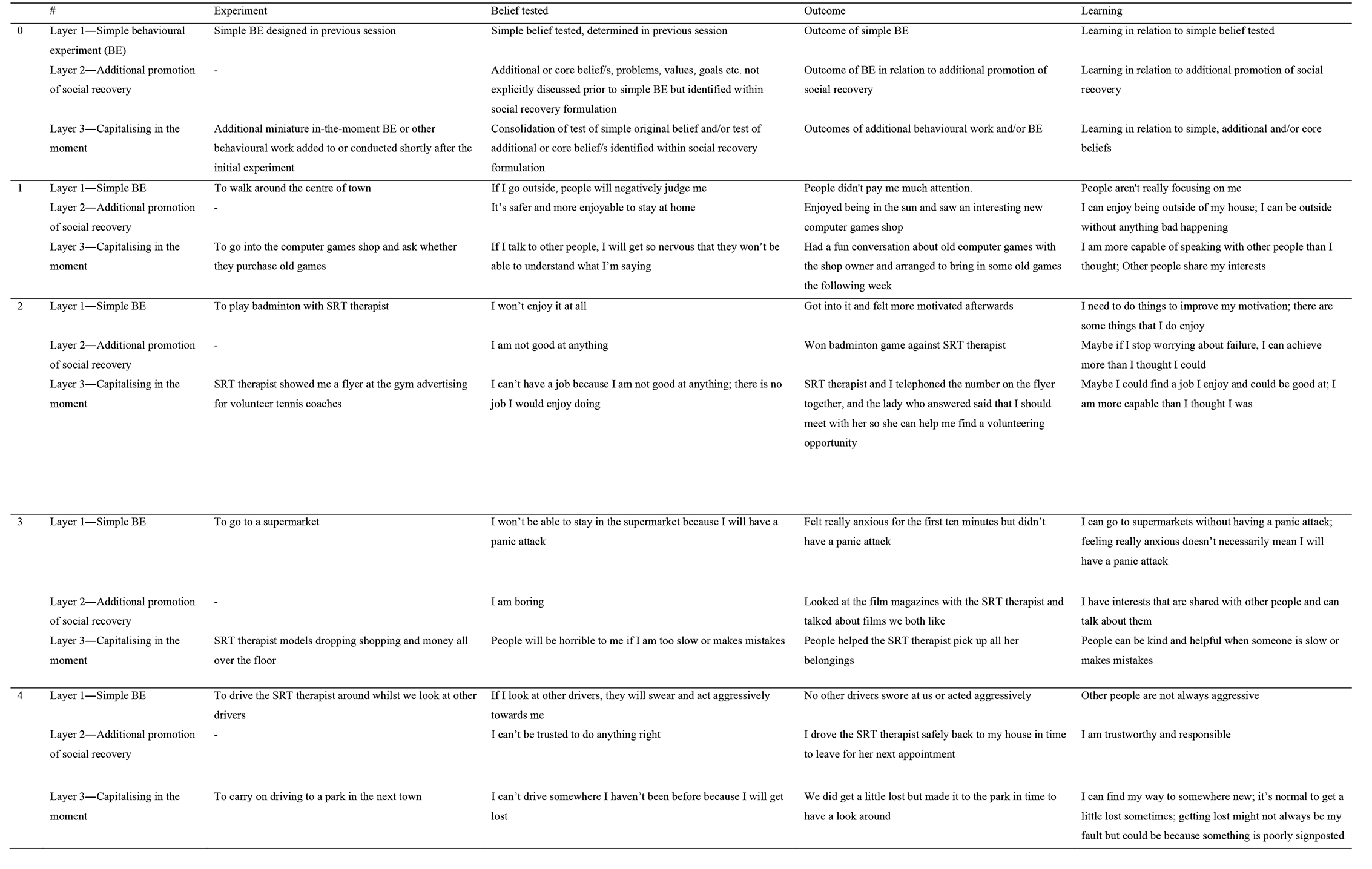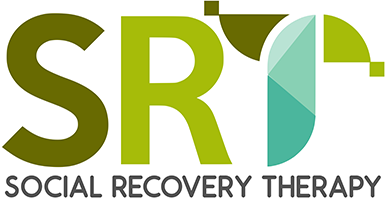SRT Behavioural Work
SRT Behavioural Work provides the foundation for change within social recovery therapy. There is a strong emphasis on starting this work towards the beginning of therapy. Therapists will ‘walk alongside’ clients to maximise engagement and participation. Behavioural activation and behavioural experiments are conducted in line with the client’s identified goals and values. This helps to keep the client motivated and the therapy focused. Throughout therapy, the focus is on identifying and removing barriers to social recovery.
SRT Behavioural Work activation
BA is especially important when depression has been highlighted as a barrier to social recovery. Emphasis is placed on the meaning of activity, including achievement, closeness to others and enjoyment. The therapist will work collaboratively with the client to identify activities which the client sees as both meaningful and potentially possible, and then start to incorporate these into daily life. The therapist will work alongside clients to aid motivation and engagement in identified activities. This can be extremely varied – from ‘washing up’ at home, attending a new club or experiencing a new activity together.
SRT multi-layered behavioural experiments
SRT Behavioural Work experiments in help to promote change on all levels – challenging thoughts and beliefs and providing new learning and reflection on alternative ways of acting and interpreting different situations. Moreover, conducting in vivo experiments with the individual help to support a positive therapeutic alliance and provide experiences of the therapist ‘walking alongside’ the client. Behavioural experiments in SRT are sophisticated and multi-layered:
1. Simple behavioural experiment –
a. A simple behavioural experiment, usually designed in previous session, is conducted.
b. For example, testing the impact of ceasing to use a safety behaviour.
2. Additional promotion of social recovery –
a. Additional or core belief/s that were perhaps not explicitly discussed prior to simple behavioural experiment are targeted.
b. For example, using the outcome of the behavioural experiment to challenge other beliefs identified within social recovery formulation
3. Capitalising in the moment –
a. Using in-the-moment flexibility and creativity to increase the impact of the simple behavioural experiment through consolidating, updating or extending the original experiment.
b. This could include consolidating the findings of the simple original behavioural experiment through repeating it in a novel situation.
c. Alternatively, it could include remaining in the location of the original behavioural experiment to engage in structured activity or explore interests.
SRT multi-layered behavioural experiments support social recovery broadly:
Linked to social recovery barriers and goals –
- Using the experiment to facilitate getting out of the clinic room or the home and engage in new experiences and identify potential goals and interests,
- Providing enjoyable activities,
- Offering opportunities for the therapist to provide in vivo social skills training through example by modelling interactions with other people,
- Conducted with observation and/or involvement from the social network assisting to help members of the social network understand and support the SRT intervention,
- Use the client’s ability to engage in behavioural experiments to promote a sense of hopefulness and positive sense of self.
Used in SRT re-formulation –
- Information from SRT behavioural experiments is used to constantly adapt and refine the client’s formulation,
- Information can be used to increase understandings of the therapist, individual and social network regarding maintenance factors.
Scaffolding SRT multi-layered behavioural experiments –
- SRT involves leaving the clinic or home environment with the therapist as early on in treatment wherever possible.
- Crucially, the therapist ‘walks alongside’ the client to help promote and complete behavioural experiments – they are not just set up as homework tasks to be completed alone.
- Good quality assessment will have identified a variety of activities and behaviours which can be targeted throughout the treatment process and which are in accordance with values and goals.
- If necessary, the therapist will model the experiment first and/or use motivational interviewing techniques.
- Cognitive techniques are utilised to increase motivation and encourage participation.
- Experiments will be carefully planned and flexibly enacted in close collaboration with the client.
- Great care is taken to debrief following an experiment, reflecting on whether predictions occurred and assessing if safety behaviours were helpful or maintaining of the problem – this is then used to inform reformulation.
SRT Behavioural Experiment Examples
 Additional resources
Additional resources
SRT Behavioural Experiment Training Package [downloadable file, see additional file]
SRT Behavioural Experiment Record Sheet DOWNLOAD
Videos
Attention shift = Video 1 – Video 2 – Video 3
A Value-Based Behavioural Experiment = Video 1 – Video 2

